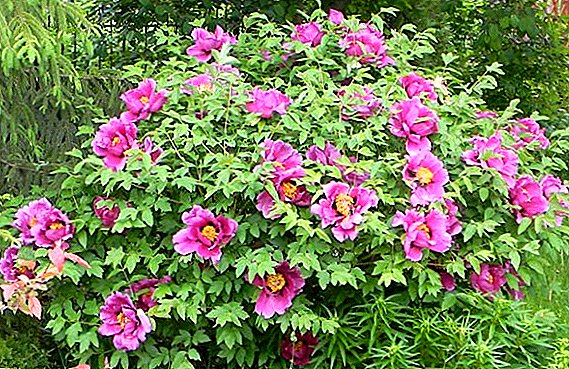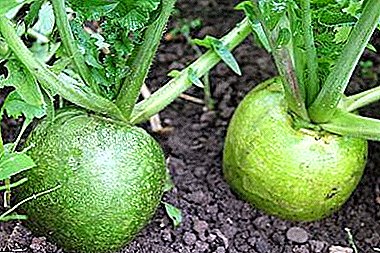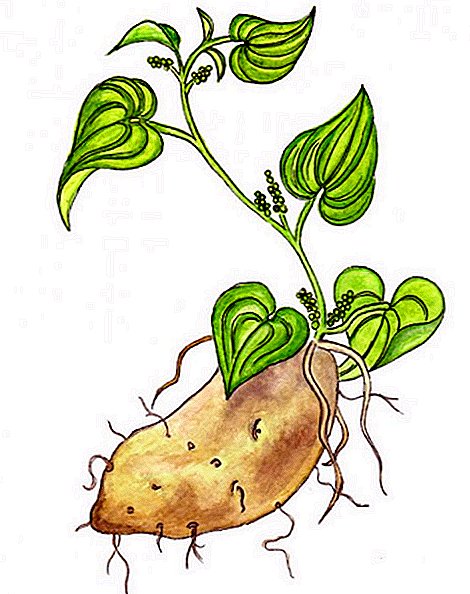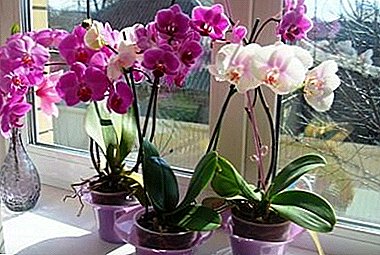
An orchid is a truly extraordinarily beautiful flower that you do not often see on the window sill at the grower. Taking care of her is not easy, but if you put your whole soul into it, the plant will thank for its lush flowering.
It is not enough to organize suitable room conditions, it is necessary to do the cutting of roots properly and in time, and this is quite a difficult task. The plant has an unusual root system, so it is necessary to know all the subtleties and tricks so that the flower does not die after trimming the roots.
The importance of the root system for the plant
Orchids have two kinds of roots - aboveground and underground.. Aerial roots - modified underground. The root system is the most important organ in a flower. With them, the flower receives moisture and oxygen.
The main function of the aerial roots is supporting and supporting. Underground roots also nourish the plant with nutrients, retain the plant and collect moisture from the soil.
Can I trim the root part and do I need to do this?
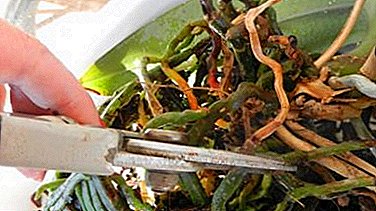 Alive. They are easily distinguished from the dead. A healthy white root in contrast to the gray or dark brown dead.
Alive. They are easily distinguished from the dead. A healthy white root in contrast to the gray or dark brown dead.In no case should live roots be cut, as this will hurt the orchid and it will develop diseases.
- Dead. Do I need to remove dry roots? Here opinions differ. Some flower growers do not recommend cutting them, because it can break the stability of the flower, while others say that they need to be removed without fear of anything. Is rotten cut off? There are no doubts here - the rotten ones are immediately cut off. Such roots will never dry out, but only contribute to the development of bacteria.
- Got out of the pot. Consider whether it is possible and necessary to cut the aerial roots that came out of the pot? If air roots are observed outside the container, then do not worry. Such an appearance is caused by the features of the orchid. Cutting them, the plant will lose moisture, which feeds it. Over time, it will die.
No matter how many air roots there are, it is not necessary to remove them if they are outwardly healthy.
We offer you to watch a video about healthy and rotten orchid roots:
Step-by-step instructions on how to carry out the procedure.
Preparation of tools
For the procedure you will need a pruner or a knife. Before you use, you must prepare inventory. It is disinfected to prevent infection. Well suited alcohol, which is necessary to wipe the blade.
Nail scissors are not suitable for trimming orchids. Often, it is they who are taken by inexperienced growers and damage the plant.
Inspecting the flower and removing the damaged part
Consider how to prune damaged orchid roots, aerial or underground. Before starting the procedure, the roots are examined.. Unsuitable for rotting or rotting. They differ from healthy in that they do not change their color as the soil in the pot dries: always brown. The trimming process itself:
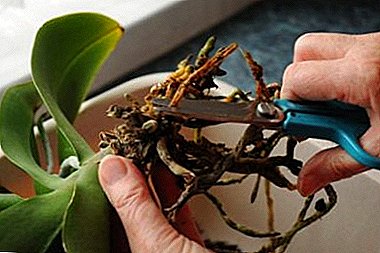 First, the flower is taken from the container. Before pruning should not water the orchid. From the dry substrate it is easier to pull out.
First, the flower is taken from the container. Before pruning should not water the orchid. From the dry substrate it is easier to pull out.- Next you need to determine which roots will be deleted.
- When rotting was discovered, tools are prepared.
- Then the damaged area is cut off. If it is located in the lower part, only rot is removed, and if the damage is at the base of the root, then it is completely.
- After the parcel has been deleted, the slicing points are processed. It is necessary to dilute the fungicide or make a manganese solution in a separate container. There is an orchid for 10-15 minutes.
- Having disinfected, the lower part of the plant is put in a vitamin solution. To prepare it you will need: 1 liter of water, in which ampoules are diluted with vitamins B12, B1, B. You also need to hold the flower for 10-15 minutes. After a couple of months, new roots will appear.
- Now you can return the orchid in the pot. Drainage is necessarily placed on the bottom, and the voids are filled with new soil.
What to handle after the procedure?
The place of the cut is a peculiar wound in the orchid. It is through it that the pathogenic bacteria enter the plant. If the roots are cut and the cut is not processed correctly, the flower will die.
During pruning, it is recommended to disinfect with the following means:
- Charcoal. It is used not only to treat wounds, but also for the lower part of the cuttings that will be planted. Often, growers add crushed charcoal to the plant pot. This is a good prevention that prevents root rot.
- Fungicide. Copes with fungal diseases. It is used in extreme cases.
- Moss Sphagnum. Holder of bactericidal properties. Helps to cope with wounds in a short time. Processed as follows: finely crushed or grated moss grated, and then they touch the wound.
- Potassium permanganate. No need to immerse the root in it, just touch the solution to the damaged place. Since potassium permanganate is a strong antiseptic, the risk of subsequent decay is very low.
- Ground cinnamon. This seasoning is the best means by which you can sanitize and dry the wound.
- Vodka is not suitable for handling a slice. Alcohol in its composition rises through the capillaries and dries the tissue.
Consequences of pruning for plants
 Any intervention is stressful for the plant, especially as serious as cutting the roots. But a properly performed procedure favorably affects the orchid, since rotten and dead roots are removed. The flower is thus updated.
Any intervention is stressful for the plant, especially as serious as cutting the roots. But a properly performed procedure favorably affects the orchid, since rotten and dead roots are removed. The flower is thus updated.
After all the manipulations do not need to disturb the orchid, she will need time to move.
The main thing is to do this, following all the recommendations and advice, because the consequences of improper removal of the roots can be disastrous, even to the death of a pet.
Flower care during recovery
A month later, care resumes:
- Watering is moderate, as the soil dries.
- Spraying from a spray bottle will be required.
- Fertilizer is not necessary.
- Temperature regime - we will get to +25, and at night to +15 degrees.
- After pruning, the plant is removed as far as possible from the heating devices, and closed with a matte film, thereby preventing direct sunlight from falling on the flower.
Is it possible and necessary to carry out pruning?
Conclusion
In this way, Orchid root system - the most important organ and it needs special care, which consists in pruning rotten and dead roots. We have disassembled, whether it is necessary to remove air and dead roots, and how to do it correctly. The florist should be as careful and vigilant as possible during the procedure, the future of the plant depends on it.


 Alive. They are easily distinguished from the dead. A healthy white root in contrast to the gray or dark brown dead.
Alive. They are easily distinguished from the dead. A healthy white root in contrast to the gray or dark brown dead. First, the flower is taken from the container. Before pruning should not water the orchid. From the dry substrate it is easier to pull out.
First, the flower is taken from the container. Before pruning should not water the orchid. From the dry substrate it is easier to pull out.




